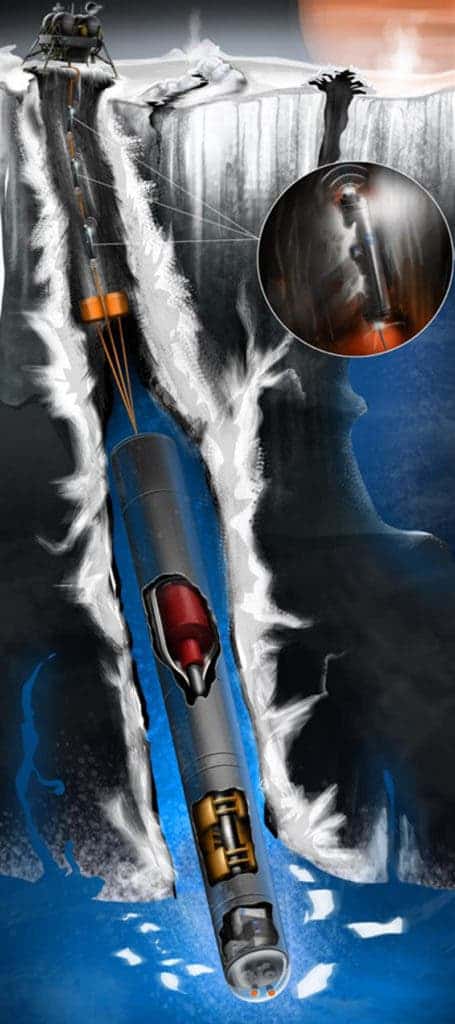Researchers at the University of Illinois at Chicago (UoI) have designed a nuclear-powered ‘tunnelbot’ to explore Europa, Jupiter’s ice-bound moon.

Artist’s rendering of the Europa “tunnelbot.”
Image credits Alexander Pawlusik / LERCIP Internship Program, NASA Glenn Research Center.
Europa (the moon, not the continent) has captured the imaginations of space buffs around the world since 1995. That year saw NASA’s Galileo spacecraft’s first flyby around the moon which, along with subsequent investigations in 2003, pointed without a doubt to a liquid ocean beneath the icy surface.
All that water makes Europa a very strong candidate for alien microbial life or at least evidence of now-extinct microbial life. Needless to say, researchers were very thrilled about paying the moon a visit. However, we simply didn’t have any machine capable of pushing through the crust and then braving the oceans beneath — at least, not until now.
We all live in a nuclear submarine
“Estimates of the thickness of the ice shell range between 2 and 30 kilometers [1.2 and 18.6 miles], and is a major barrier any lander will have to overcome in order to access areas we think have a chance of holding biosignatures representative of life on Europa,” said Andrew Dombard, associate professor of earth and environmental sciences at the University of Illinois at Chicago.
Dombard and his spouse, D’Arcy Meyer-Dombard, associate professor of earth and environmental sciences at UoI, are part of the NASA Glenn Research COMPASS team, a multidisciplinary group of scientists and engineers tasked with designing technology and solutions for space exploration and science missions. Together with the team, Dombard presented their new design — a nuclear-powered tunnelling probe — at the American Geophysical Union meeting in Washington, D.C. this week.
The so-called “tunnelbot” is meant to pierce through Europa’s ice shell, reach the top of its oceans, and deploy instruments to analyze the environment and search for signs of life. The team didn’t worry about how the bot “would make it to Europa or get deployed into the ice,” Dombard said, instead focusing on “how it would work during descent to the ocean.”
Such a tunnelbot should be able to take ice samples as it passes through the moon’s shell, water samples at the ocean-ice interface, and it should be able to search the underside of this ice for microbial biofilms, the team explains. Finally, it should also be capable of searching for and investigating liquid water “lakes” within the ice shell.
Two designs were considered for the job: one version of the robot powered by a small nuclear reactor, and another powered by General Purpose Heat Source bricks (radioactive heat source modules designed for space missions). In both cases, heat generated by the power source would be used to melt through the ice shell. Communications would be handled by a string of “repeaters” connected to the bot by optic fibre cables.
NASA is very interested in visiting Europa, particularly because of its potential to harbor life. However, the bot designed by Dombard’s team isn’t an official ‘go’ sign for such an expedition. Whether NASA will plan tunneling, and if one of these designs would be selected for the job, remains to be seen.









